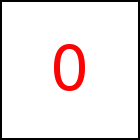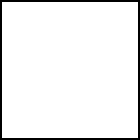Textures
Each surface of the shape shown by a transition has a texture.
This may be one for a rectangle or more e.g. 6 for a cube.
In the taccgl™ default1, a texture is a (background-) color (or
color gradient) blended with an image. The image has an
opacity factor associated with it and can so be made fully or partially
transparent. The color acts as a background color and becomes visible
where the image is transparent.
The final appearance of a surface is influenced by Lighting
and Shadows, which simulates the appearance of an object
in the real world that appears with varying brightness and color depending
on the light sources.
Image Textures
In taccgl™ the images used as textures are described using HTML.
When using actor or a to create a transition,
the default image texture is an image of the HTML element passed.
Using mapActor or mapElement a different HTML element
can be mapped. Using mapRelative, mapClip,
or mapClipToElement a part of an HTML element can be mapped.
For objects with multiple surfaces a face needs to be
selected first (e.g. selFace).
As explained in Texture Canvas, taccgl™ uses the
taxture canvas to create a texture atlas. Using the somewhat more low level
function map you can map a rectangular portion of the texture
atlas on a surface.
Textures can also be animated
using texmove, mapTo, or mapFrom.
In addition the texture blends actually the selected portion of the Alternate Canvas
over the selected portion of the Texture Canvas over a fixed color.
Using blend it can be selected to what percentage each of these canvases are
shown. Initially only the Texture Canvas is shown not the Alternate Canvas.
A color can be selected using color or bgcolor. It becomes visible
if and where the HTML element drawn on the Texture Canvas is transparent,
or if it is made transparent using blend. Also blend and color have additional
parameters to animate the blending and the color.
WebGL™ is a trademark of the Khronos Group Inc.
[1] The image textures provided as
default are already very powerful, so frequently the default is
sufficient. More complex textures can be made by using individually
programmed fragment shaders.
| 




